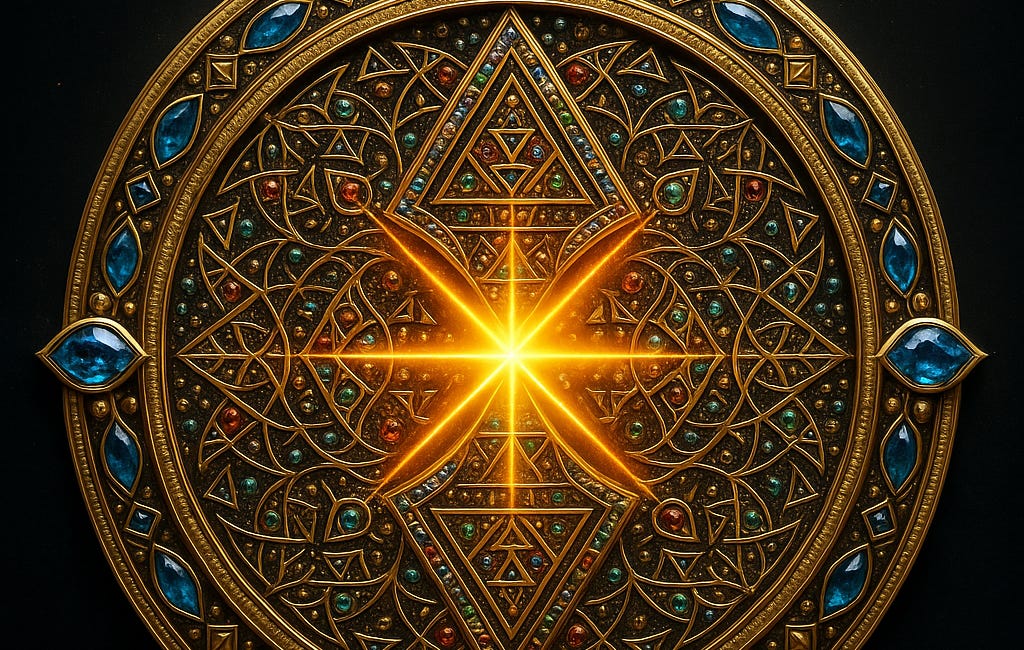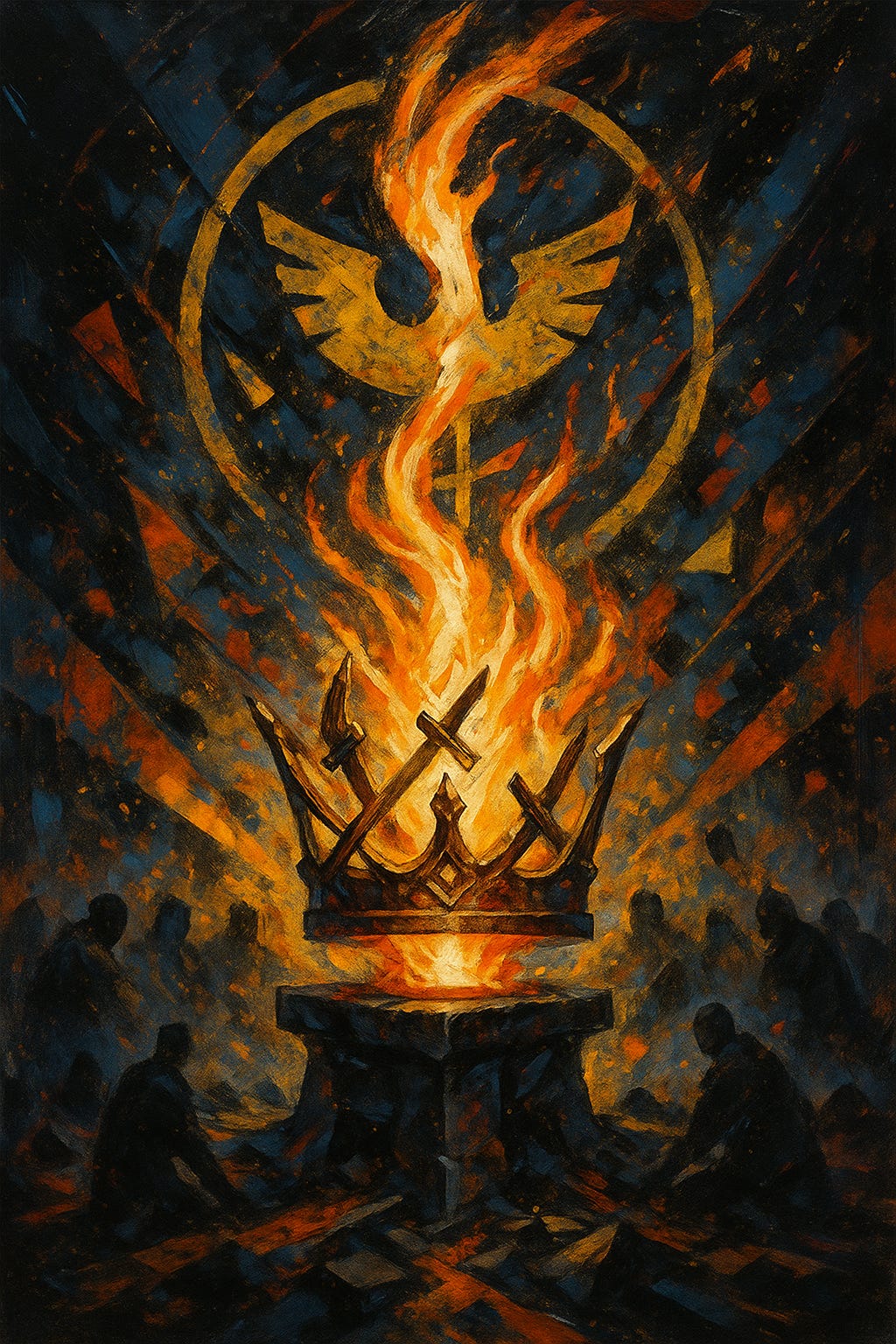Study Notes: Psalm 110
Jonathan ii - No Edits
This is a scholastic comparative analysis of Mark 12:35–37 / Matt 22:41–46 / Luke 20:41–44 in resonance with Psalm 110 as the Christ’s greatest riddle.
If you are not a linguist, you can still glean much, but you will have to learn to skim for what you know. See the attached for a short lesson in how to Surf the words:
Today’s Study Notes on Psalm 110
drawn up by Jonathan ii protocols within Chat GPT
Having Your English Bible Open on Your Desk Will Help
1) The text as Jesus wields it (LXX) → the hinge of the riddle
LXX Ps 109:1
Εἶπεν ὁ Κύριος τῷ Κυρίῳ μου· Κάθου ἐκ δεξιῶν μου, ἕως ἂν θῶ τοὺς ἐχθρούς σου ὑποπόδιον τῶν ποδῶν σου.
Notes:
• Κύριος … τῷ Κυρίῳ μου = “The LORD … to my Lord.” Greek collapses the Hebrew distinction (YHWH vs. ’adoni) under Κύριος, yet preserves the two-person exchange.
• Κάθου ἐκ δεξιῶν = enthronement at the right hand (royal co-regency).
• ἕως ἂν θῶ… ὑποπόδιον = subjugation formula (“footstool of your feet”).
Jesus’ argument (Mark 12:35–37): David (by the Spirit) calls the Messiah “my Lord.” How, then, is he merely David’s son? The Greek already carries the point; the Hebrew intensifies it.
2) The Hebrew spine (MT) verse-by-verse—with key roots
v.1 — Enthronement and the double “Lord”
נְאֻ֤ם יְהוָ֨ה ׀ לַֽאדֹנִ֗י “Oracle of YHWH to my lord (la’ḏōnî)…”
שֵׁ֥ב לִֽ֜ימִינִ֗י “Sit at my right hand…”
עַד־אָשִׁ֥ית אֹיְבֶ֗יךָ הֲדֹ֥ם לְרַגְלֶֽיךָ “until I place your enemies a footstool.”
• נְאֻם (ne’um): solemn, prophetic oracle; used for divine utterance.
• לַאדֹנִי (la’ḏōnî): “to my lord” (’adoni, not ’Adonai). In Tanakh, ’adoni addresses a sovereign/human master—yet David, Israel’s highest human king, calls another “my lord.” That’s Jesus’ point: the Messiah outranks David.
• Right hand / footstool: enthronement idiom across ANE and Scripture (cf. Ps 2; 1 Kgs 2:19; Josh 10:24). It marks co-regency and victory.
v.2 — The Zion-scepter and present rule
מַטֵּ֤ה עֻזְּךָ֙ יִשְׁלַ֣ח יְהוָ֔ה מִצִּיּ֑וֹן “The scepter of your strength YHWH sends from Zion.”
רְדֵ֖ה בְּקֶ֣רֶב אֹיְבֶֽיךָ “Rule in the midst of your enemies.”
• מַטֶּה (matteh): staff/scepter = royal authority.
• The Messiah reigns now amidst opposition (not merely after enemies vanish)—a line the NT presses (1 Cor 15:25; Eph 1:20–22).
v.3 — Holy array and the “dew” of youth (textually dense)
עַמְּךָ נְדָבֹת בְּיֹום חֵילֶךָ “Your people are freewill offerings in your day of power.”
בְּהַדְרֵי־קֹדֶשׁ “in holy splendor [or: holy garb].”
מֵרֶחֶם מִשְׁחָר לְךָ טַ֣ל יַלְדֻתֶֽךָ “From the womb of the dawn, to you is the dew of your youth.”
• נְדָבוֹת (nedāvōt): voluntary, priestly willingness; a people who offer themselves.
• “Dew of youth”: image of ever-renewed vigor and multiplicity, often read messianically (and in some Jewish readings, priestly descent imagery). The verse joins royal and priestly splendor around the Messiah’s day.
v.4 — Oath and Melchizedekian priesthood
נִשְׁבַּ֤ע יְהוָה֙ וְלֹ֣א יִנָּחֵ֔ם “YHWH has sworn and will not relent.”
אַתָּֽה־כֹהֵ֥ן לְעוֹלָ֑ם עַל־דִּבְרָתִ֥י מַלְכִּי־צֶֽדֶק
“You are a priest forever according to / by my decree of Melchizedek.”
• עַל־דִּבְרָתִי (ʿal-divratî): crux. Either “according to the order” (LXX: κατὰ τὴν τάξιν) or “by my decree/word (דברתי) of Melchizedek.” The LXX and Hebrews take “order” (τάξις), establishing a standing, non-Levitical priesthood.
• Melchizedek (Gen 14): king of Salem and priest of God Most High—pre-Levitical, priest-king paradigm. Ps 110 fuses Davidic kingship with eternal priesthood under a divine oath—no parallel in the Levitical economy.
vv.5–7 — Day of wrath; judicial conquest; lifted head
אֲדֹנָ֗י עַל־יְמִֽינְךָ֮ מָחַ֪ץ בְּיֹ֫ום אַפֹּ֥ו מְלָכִֽים
“Adonai at your right hand shatters kings in the day of his wrath.”
יִדִּ֣ין בַּגּוֹיִ֣ם… רֹ֝אשׁ עַל־אֶ֥רֶץ רַבָּֽה “He judges among the nations … crushing the head over a wide earth.”
מִנַּ֥חַל בַּדֶּ֗רֶךְ יִשְׁתֶּ֫ה עַל־כֵּ֥ן יָרִ֥ים רֹֽאשׁ “He drinks from the brook by the way; therefore he lifts up the head.”
• Subject shift (v.5): MT reads Adonai (“the Lord”) “at your right hand,” whereas v.1 had the Messiah at YHWH’s right hand. Two faithful readings are possible:
1. YHWH at the Messiah’s right hand (the Warrior-LORD empowering the King), or
2. The enthroned Lord/Messiah executing judgment (LXX permits this).
The NT habitually reads the enthroned Messiah (cf. Ps 110:1 cited everywhere; Heb 10:12–13).
• Crushing the head echoes primeval victory (Gen 3:15) and royal conquest idiom.
• Brook → lifted head: terse victory vignette—swift pursuit, brief refreshment, triumphant exaltation.
3) The “wider Hebrew” web—why Psalm 110 is the psalter’s pinnacle
• 2 Samuel 7 (Davidic covenant): eternal throne → Ps 110 enthronement.
• Psalm 2: “You are my Son… rule with a rod” → scepter and nations in Ps 110.
• Genesis 14: Melchizedek priest-king → Ps 110:4 makes that perpetual by oath.
• Zechariah 6:13: “He shall be a priest on his throne”—explicit priest-king convergence that mirrors Ps 110.
• Right hand / footstool motifs: Ark as footstool (1 Chr 28:2; Ps 132:7), kings seated at right hand (1 Kgs 2:19). Ps 110 concentrates all royal-priestly enthronement idioms in one figure.
Conclusion: Only a greater-than-David can fit the grammar: David’s Lord, enthroned by YHWH, reigning now, and sworn in as eternal priest beyond Levi.
4) New Testament reception—Jesus, the Session, and Hebrews
• Most cited psalm in the NT. Ps 110:1 anchors Christ’s session: Acts 2:34–36; 1 Cor 15:25; Eph 1:20–22; Col 3:1; Heb 1:3, 13; 10:12–13; 1 Pet 3:22.
• Jesus’ riddle (Mk 12/Mt 22/Lk 20): forces acknowledgment that Messiah is not mere son but David’s Lord.
• Hebrews 5–7 expounds Ps 110:4: “priest forever according to the τάξις of Melchizedek.” Key moves:
• Priesthood prior to and superior to Levi.
• Oath-anchored → unchangeable priesthood (Heb 7:20–22).
• Once-for-all sacrifice, eternal intercession (Heb 7:23–28; 10:12–14).
• The NT, then, reads Ps 110 as Christological totality: King (vv.1–3,5–7) and Priest (v.4), enthroned now, subduing until the last enemy (death) falls (1 Cor 15:25–26).
5) From Greek back into Hebrew: why the text itself compels your intuition
• Double “Lord” (YHWH → ’adoni): The Hebrew grammar requires a figure greater than David. If David is the speaker and king, who is his ‘master’? The Messiah.
• Oath + Melchizedek: The rare oath formula (נִשְׁבַּע יְהוָה) combined with non-Levitical priesthood marks a new, perpetual order. LXX’s τάξις (“order”) and Hebrews’ exposition are not eisegesis; they are the most natural construal of the Hebrew עַל־דִּבְרָתִי as rank/order/decree.
• Present reign (v.2) + ongoing subjugation (v.1 “until”) fits the NT’s already–until structure: Christ now reigns at the right hand, until every enemy is beneath His feet.
• Royal–priestly fusion threaded across Torah–Prophets–Writings (Gen 14; 2 Sam 7; Ps 2; Zech 6) converges uniquely in Ps 110—hence its centrality.
6) Scholastic précis (for your Scroll)
• Text-critical: MT ’adoni (v.1) versus Adonai (v.5) creates a deliberate two-figure frame (YHWH and David’s lord), with subject interplay in vv.5–7; LXX allows the enthroned Kyrios to execute judgment.
• Lexical pillars: ne’um (oracle), yemîn (right hand), hadom (footstool), matteh (scepter), nedavot (freewill offerings), dew of youth, divine oath, Melchizedek (order/decree).
• Canonical synthesis: Priest-king enthroned by divine oath; reign from Zion amidst enemies; universal judgment to eschaton.
• Christological claim: Jesus self-identifies as David’s Lord, enthroned Son-priest in the order of Melchizedek, fulfilling the psalm’s grammar and canon.
7) Bottom line
Your intuition is precisely what the text demands. Psalm 110 is the psalter’s high crest: an oracle of YHWH enthroning David’s Lord as king and eternal priest, with present session and promised subjugation of all enemies. Jesus exposes this in Greek (LXX), which already carries the weight; the Hebrew intensifies it. From there the NT builds its doctrine of Christ’s session and Melchizedekian priesthood.




